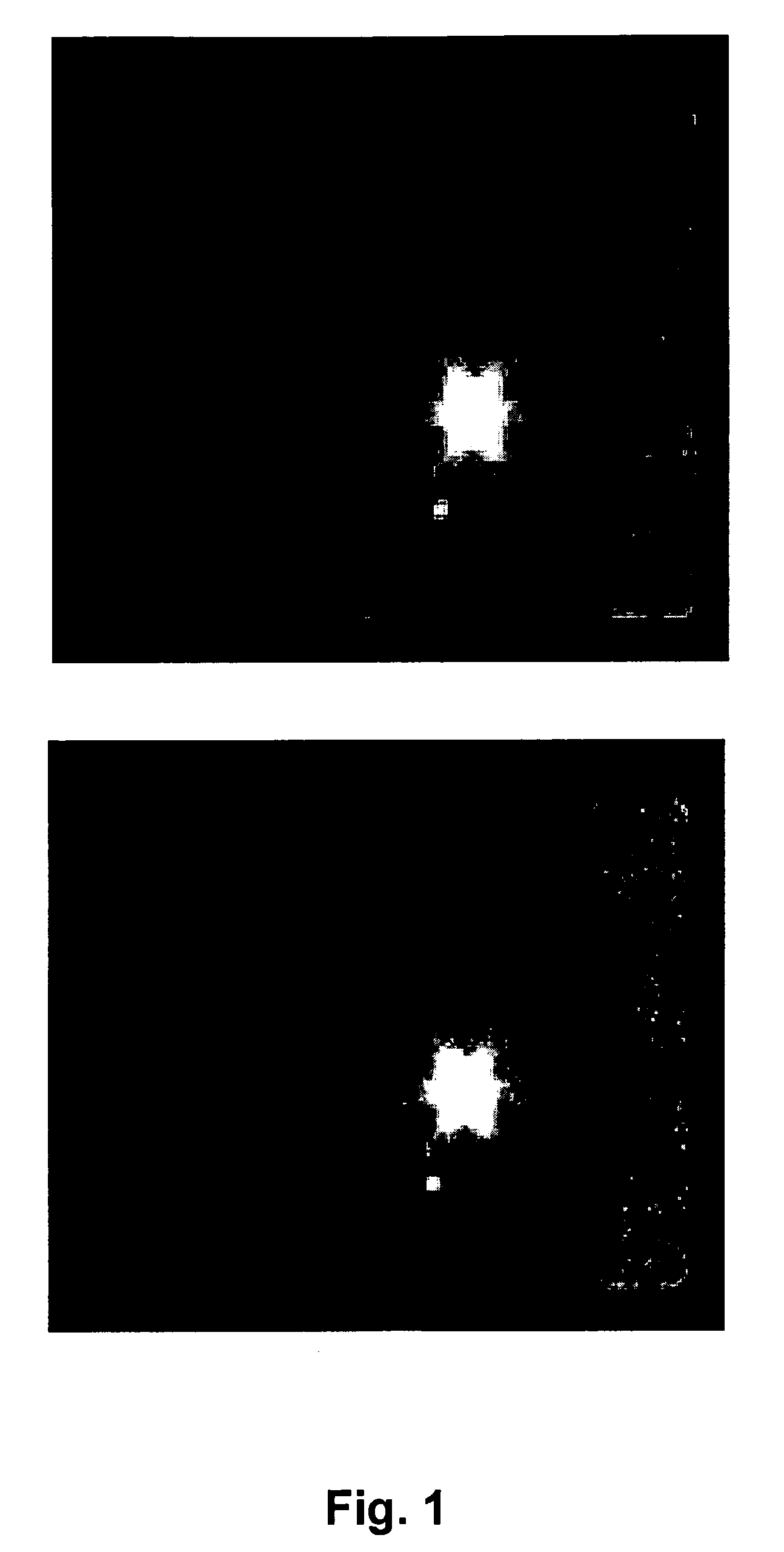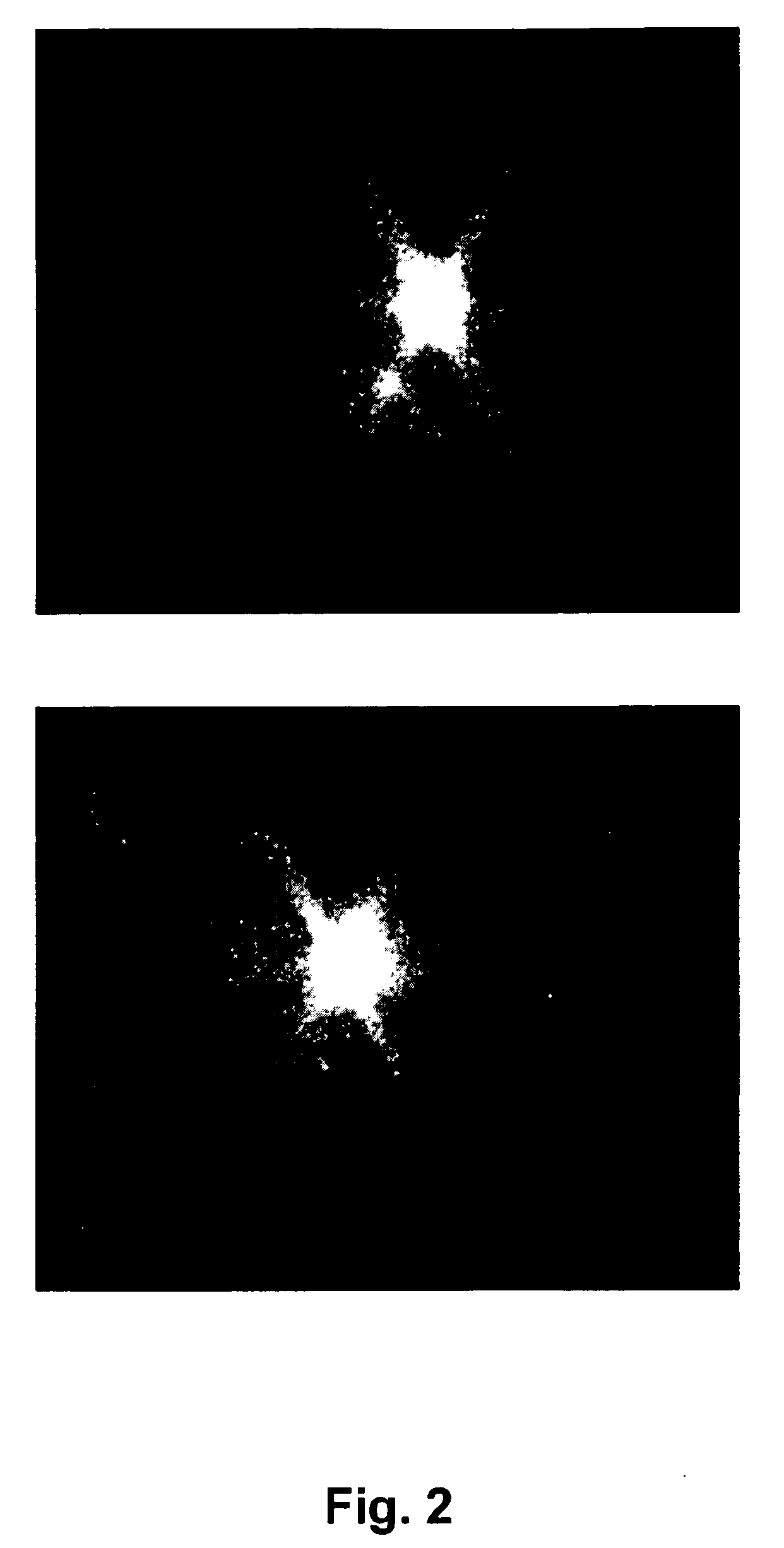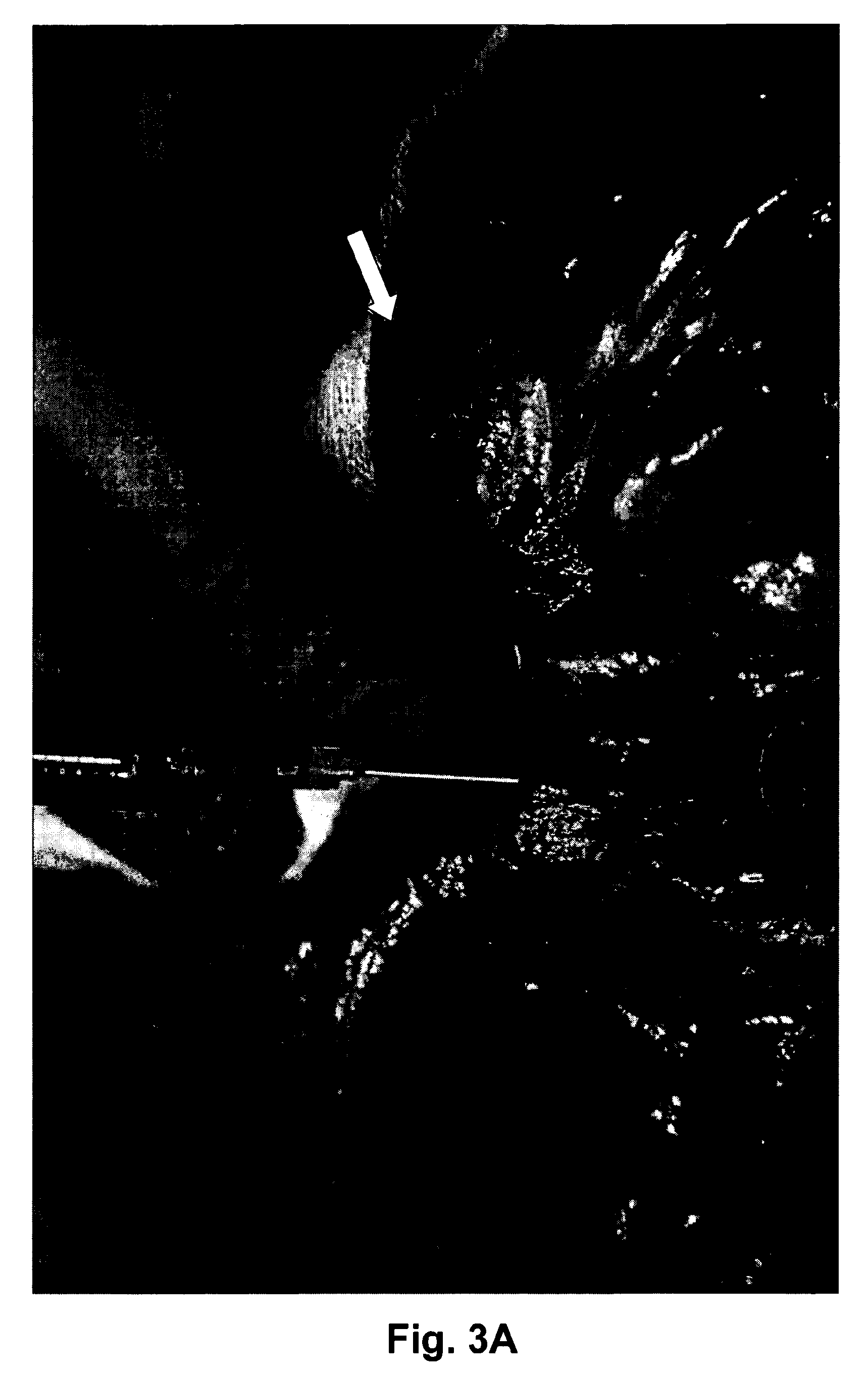Method for treating disseminated cancer
a cancer and immunotherapy technology, applied in the field of immunotherapy for treating patients suffering from disseminated cancer, can solve problems such as not known, and achieve the effects of high amount of t-lymphocytes, above, and promotion of cytotoxic t lymphocytes (tc, high ratio of memory lymphocytes)
- Summary
- Abstract
- Description
- Claims
- Application Information
AI Technical Summary
Benefits of technology
Problems solved by technology
Method used
Image
Examples
example 1
Identification of Metinel Lymph Nodes for Metastasis
[0136]Eight patients (four women and four men) were included in the study (see Table 1); the average age was 61.4 years. One of them underwent two operations with localisations of metinel nodes at both procedures. Metinel nodes were located by three principally different ways. A lymph node locator was injected around and close to abdominal recurrences, parenchymatous liver metastases, or groin lymph node metastases.
[0137]
TABLE 1Overview of patients in studyNumber ofPos / Neg forPatientYearsPrimary tumourOrigin ofmetinelmetastaticno.oldSexsitemetinel nodesnodesdisease148MCaecumLocal recurrence3Pos254MRectumLiver metastases2Neg377FColonLiver metastases3Negsigmoideum473MColon ascendensLiver metastases4Neg566MColon ascendensLiver metastases4Neg651FOvarian cancerLiver metastases3Pos763FOvarian cancerGroin lymph2Posnode metastases859FPancreatic cancerLocal recurrence4Pos
[0138]The first patient was a 48-year old man who had earlier been ope...
example 2
Expansion of Tumour-Reactive T-Lymphocytes
[0148]Identification of metinel nodes was done using the method described herein.
[0149]The metinel- and non-metinel lymph nodes were cut in half and one part of the node was sent for histopathological examination according to routine procedure. A part of the metastasis including a sample of the invasive margin was removed to use as an antigen source during the further procedure.
Cell Culture
Phase I, Initial Activation
[0150]The metinel node material was kept on ice and immediately taken care of using AIM V® Media (Invitrogen) at all times. Single cell suspensions of metinel node lymphocytes was obtained through gentle homogenisation in a loose fit glass homogenisator, and following homogenisation cells were washed twice in medium. The metinel node lymphocytes were put in cell culture flasks at 4 million cells / ml and interleukin-2 (IL-2) (Proleukin®, Chiron) was added to a concentration of 240 IU / ml medium.
[0151]Autologous metastasis extract wa...
example 3
Treatment of Metastases by Administering Expanded Metastasis-Reactive T-Lymphocytes
[0159]The following three cases tend to illustrate that T-lymphocytes obtained and expanded from metinal lymph nodes may be used for treating disseminated cancer.
[0160]A 47 year old man had earlier been operated on for a colon cancer in the caecum with a right-sided hemicolectomy. One year later he developed a 5 cm large intraabdominal recurrence in the mesenteric fat outside the area of the anastomosis. During surgery, patent blue dye was injected close in the fat surrounding the metastasis and three metinel nodes along the medial colic artery, including one apical node in the root of the mesentery, were identified. A resection of the anastomotic region and the recurrence was made en bloc. The metinel nodes and an invasive part of the metastasis were dissected postoperatively and processed as described herein. Metastasis-reactive lymphocytes were expanded to high numbers. The patient had a transfusio...
PUM
| Property | Measurement | Unit |
|---|---|---|
| time | aaaaa | aaaaa |
| time | aaaaa | aaaaa |
| temperature | aaaaa | aaaaa |
Abstract
Description
Claims
Application Information
 Login to View More
Login to View More - R&D
- Intellectual Property
- Life Sciences
- Materials
- Tech Scout
- Unparalleled Data Quality
- Higher Quality Content
- 60% Fewer Hallucinations
Browse by: Latest US Patents, China's latest patents, Technical Efficacy Thesaurus, Application Domain, Technology Topic, Popular Technical Reports.
© 2025 PatSnap. All rights reserved.Legal|Privacy policy|Modern Slavery Act Transparency Statement|Sitemap|About US| Contact US: help@patsnap.com



